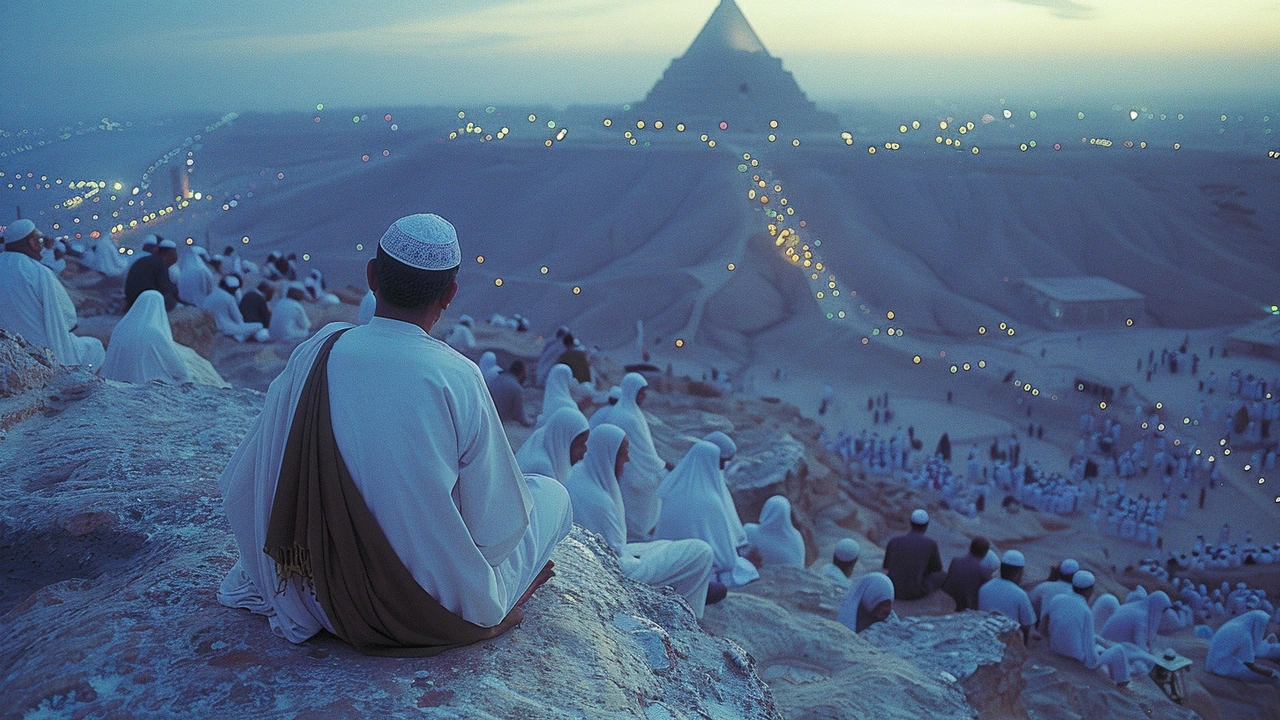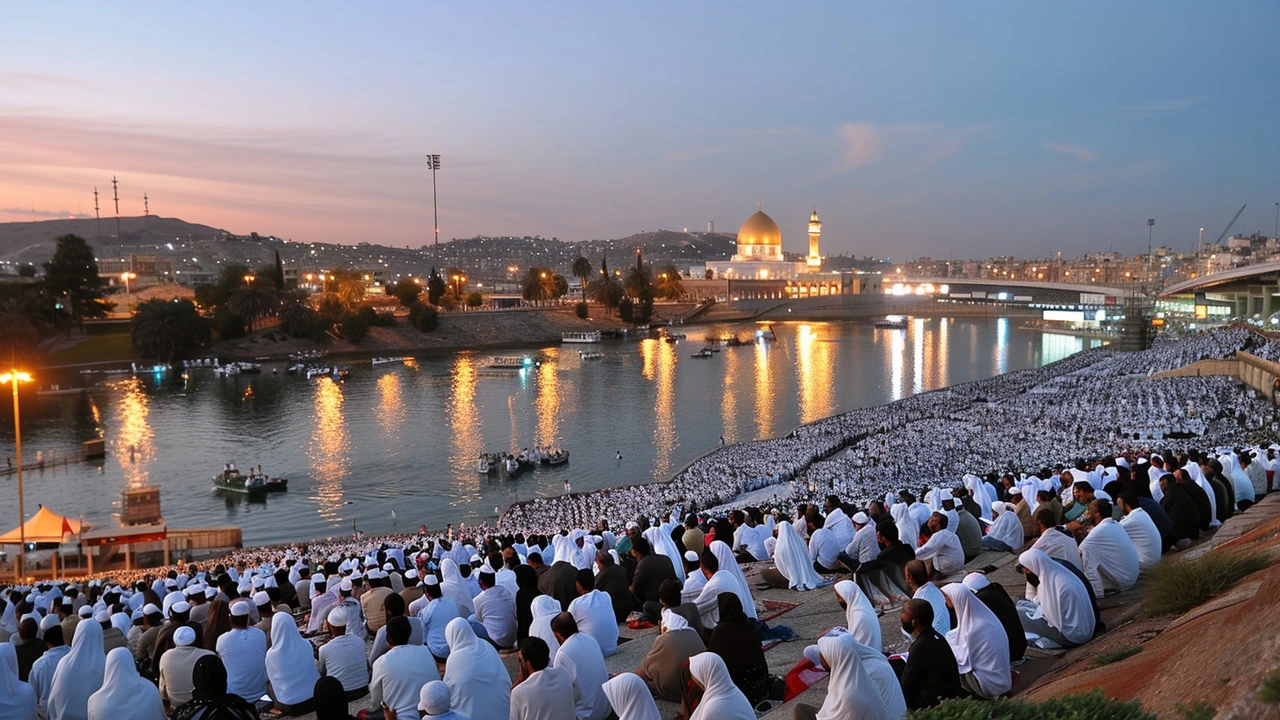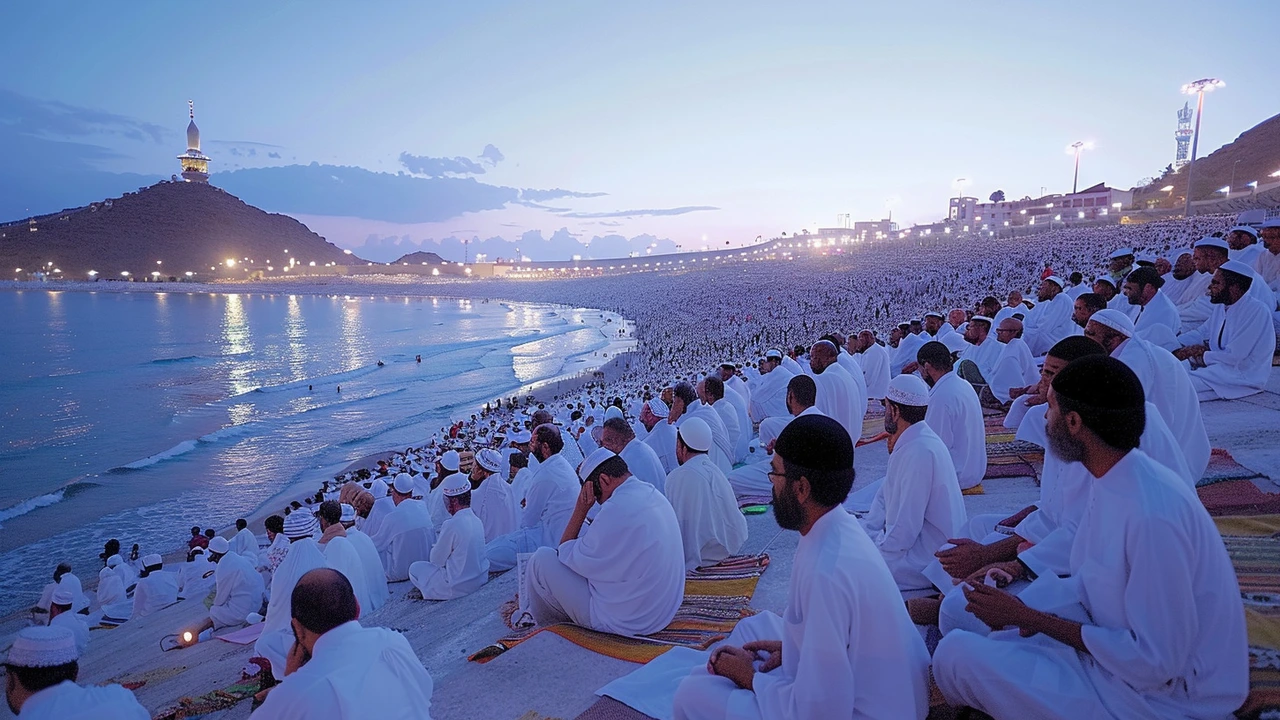Thousands of Pilgrims Converge at Mount Arafat
In an incredible display of devotion, thousands of Muslim pilgrims from diverse corners of the world came together at Mount Arafat in Saudi Arabia for a day-long worship and reflection during the annual Hajj pilgrimage. Known for its spiritual significance, the gathering at Mount Arafat, or the Hill of Mercy, represents the pinnacle of the five-day religious journey that every Muslim must undertake at least once in their lifetime, if they are physically and financially able.
This year, Saudi authorities anticipate more than two million devotees to make this sacred pilgrimage, effectively nearing the numbers seen before the coronavirus pandemic drastically restricted global travel and large gatherings. Pilgrims, clothed in simple white garments symbolizing purity and equality, stood shoulder to shoulder, raising their hands and voices in prayers, asking Allah for mercy, blessings, prosperity, and good health.
The Historical Significance of Mount Arafat
Mount Arafat holds a profound historical and religious significance. It is believed to be the very place where Prophet Muhammad delivered his final sermon—known as the Farewell Sermon—1,435 years ago. The sermon was a powerful discourse on the importance of justice, equality, and piety, issuing lasting guidance for the Muslim community.
Located about 20 kilometers southeast of Mecca, the bare granite hill, without any significant shade, tests the resolve and endurance of the pilgrims who brave extreme heat to fulfill their religious duties. This year, the temperatures peaked at a sweltering 47°C (116°F), making hydration and protection from the sun critical. Many pilgrims were seen carrying umbrellas and utilizing designated cooling stations to prevent heat exhaustion.

Rituals and Practices During Hajj
The Hajj pilgrimage is one of the five pillars of Islam and involves a series of deeply symbolic rituals. After the day of worship at Mount Arafat, pilgrims travel to Muzdalifa to spend the night under the open sky and collect pebbles. These pebbles are essential for the ritualistic stoning of the Jamarat—a symbol of defiance against evil, which occurs in Mina. This act commemorates the Quranic narratives involving Prophet Ibrahim (Abraham), his son Prophet Ismail (Ishmael), and Ismail’s mother Hajar (Hagar), who exemplified unwavering faith and obedience to Allah.
On the final day, known as Eid al-Adha, which is also a major Islamic festival, pilgrims participate in the ritual of sacrificing an animal. This act signifies the willingness of Prophet Ibrahim to sacrifice his son as an act of obedience to God, before God provided a ram to sacrifice instead. Another key ritual is the circumambulation of the Kaaba, known as the Tawaf, where pilgrims walk seven times around the sacred structure, symbolizing unity and the reaffirmation of faith as they become part of a collective spiritual renaissance.
Challenges and Resilience
Amidst the spiritual fulfillment, the Hajj also poses significant physical challenges. With limited shade and extreme heat, pilgrims must take precautions to prevent heat-related illnesses. Saudi authorities have placed multiple cooling stations in strategic locations and have ensured the availability of medical services throughout the pilgrimage.
Despite the ongoing violent conflict in the Gaza Strip, which has prevented Palestinian pilgrims from attending due to the closure of the Rafah crossing, the Hajj remains a symbol of global unity and peace. The Saudi authorities have emphasized their commitment to ensuring that the pilgrimage remains solely a spiritual endeavor, unencumbered by political conflicts.

The Timeless Cycle of Hajj
The timing of the Hajj varies each year, as it follows the Islamic lunar calendar. This year, the pilgrimage falls in the second week of Dhu al-Hijjah, the last month of the Islamic calendar. Engaging in the Hajj rituals, including the standing at Mount Arafat, is essential for the faithful, as it serves as a reminder of the ultimate goals of faith: humility, repentance, and unity.
As the pilgrimage concludes with the Farewell Tawaf, pilgrims leave with a renewed sense of spiritual clarity and resolve, carrying the teachings and experiences of the Hajj back to their daily lives. The spiritual journey of the Hajj continues to inspire millions, transcending borders and uniting Muslims in a shared act of faith.



The sheer magnitude of devotion displayed at Arafat is an awe‑inspiring testament to the spiritual gravitas of Hajj 🌟🙌.
Seeing millions united in prayer is incredible it's like a wave of hope rolling across the desert with each breath we share.
The historical context of the Farewell Sermon really underscores the emphasis on justice and equality that the pilgrimage embodies, reminding us of the timeless values it promotes.
Indeed, the rites performed upon Mount Arafat encapsulate a profound theological narrative that has been meticulously preserved within Islamic jurisprudence; such an assembly merits our deepest scholarly reverence.
Anyway the whole thing is just a massive crowd control nightmare and the heat kills anyone who isn’t prepared enough.
It’s truly moving to reflect on how the pilgrimage transforms not just individuals but entire communities; the shared experience of standing on the plain of Arafat creates a bond that transcends nationality and language, forging a collective identity rooted in faith. When pilgrims gather beneath that scorching sun, they demonstrate resilience that mirrors the patience taught in the Quran, reminding us all that endurance is a virtue. The rituals, from the symbolic stoning of the Jamarat to the final Tawaf, are more than mere actions-they are expressions of devotion that echo the prophecy of unity. Each step taken around the Kaaba reaffirms a promise of solidarity, a promise that the ummah stands together in both joy and hardship. Moreover, the careful planning by the Saudi authorities, with cooling stations and medical teams, showcases a modern commitment to preserving this ancient tradition while ensuring safety. The presence of pilgrims from diverse cultural backgrounds enriches the tapestry of the Hajj, allowing us to learn from one another’s stories and perspectives. This diversity is a living illustration of the Prophet’s teaching that no Arab is superior to a non‑Arab, and no non‑Arab is superior to an Arab, but piety is the only criterion. While the heat can be oppressive, the shared prayers amplify a sense of purpose that outweighs discomfort. The moments of silent contemplation on Arafat’s ridge inspire profound personal introspection, encouraging each pilgrim to seek forgiveness and renewal. As the day concludes, the collective farewell Tawaf embodies a collective pledge to carry the lessons learned back to everyday life, fostering a ripple effect of compassion across the globe. In sum, the pilgrimage serves as a timeless beacon of spiritual rejuvenation, a reminder that the pursuit of inner peace transcends geographical borders and temporal constraints.
Sure, but let’s not forget that all that “unity” can feel a bit staged when you’re stuck in a heatwave, you know?
What a beautiful sight! The colors of the pilgrims’ ihram really brighten the desert landscape 😊. It’s amazing how people from every corner of the world come together, sharing food and stories, creating a true mosaic of cultures. Even the little kids get to experience the awe of standing at Arafat, which will stay in their hearts forever. The organization these days is laudable, with plenty of shade tents and cool water stations-kudos to the planners! :)
Absolutely, the camaraderie you described is exactly what makes the Hajj such a life‑changing event for so many.
What a spectacle!
I’ve seen the videos and honestly, the sheer scale is mind‑blowing. It’s cool how everyone’s just there, doing their thing, no drama.
Honestly, the whole Hajj vibe feels like a blockbuster movie set-lights, cameras, and a massive crowd that’s somehow still a bit chaotic. The heat? Just another plot twist.
It’s incredible how Saudi Arabia manages such a massive event, showing the world that true hospitality can overcome any challenge, even if some folks try to politicize it.
Don't you think the real story is hidden? Everyone's so caught up in the spectacle that no one looks at the behind‑the‑scenes power moves.